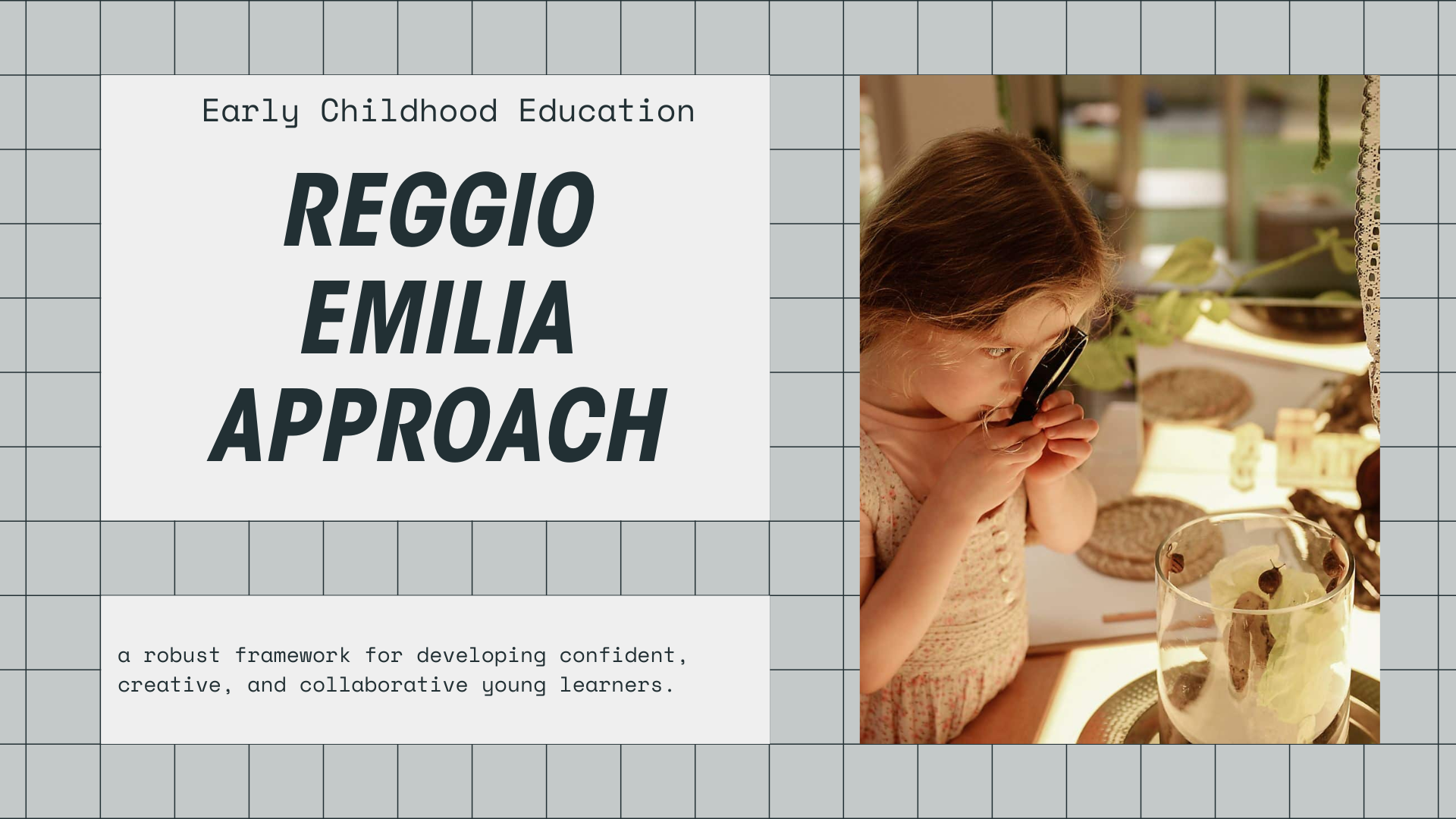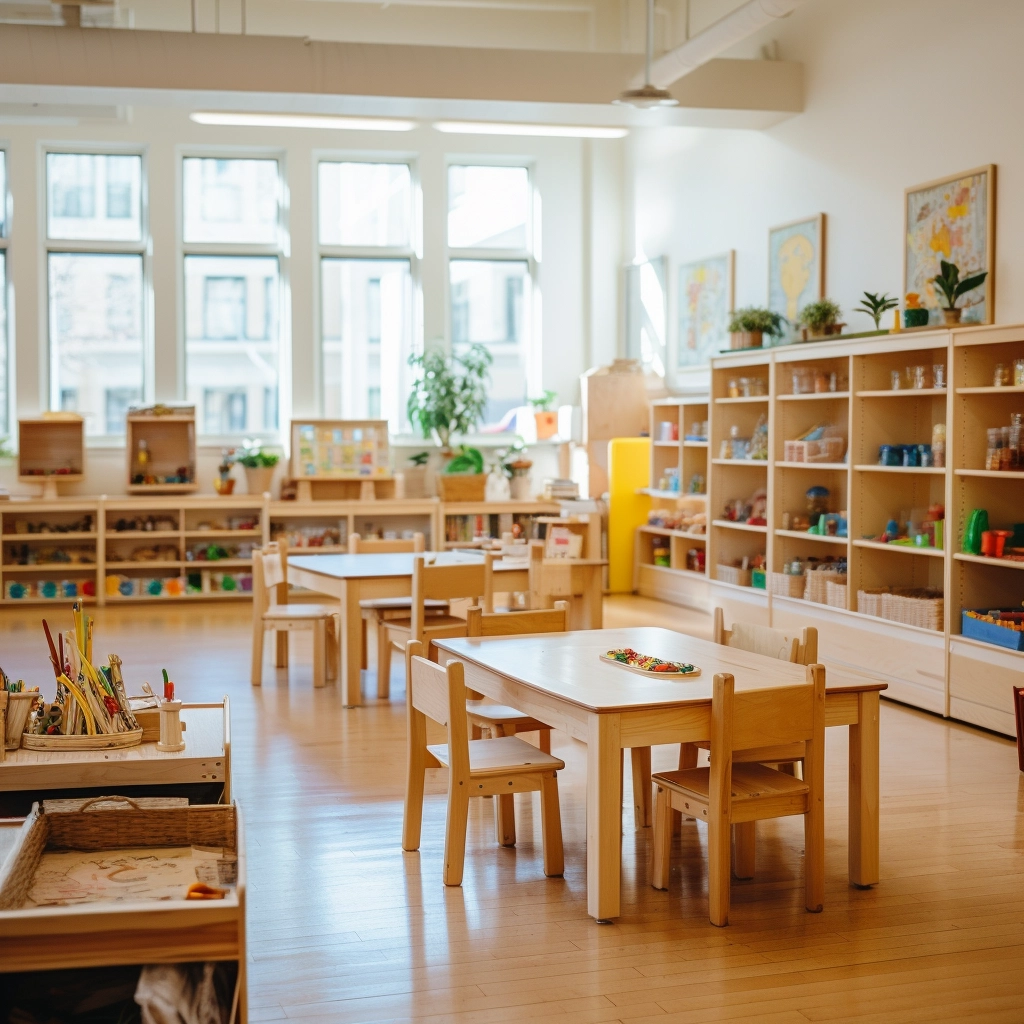Are you frustrated with early education models that treat children as passive recipients of knowledge? Do you feel that traditional classrooms are too structured, too uniform, and not conducive to genuine curiosity? Why do some kindergartens raise innovative, confident thinkers, while others churn out compliance and conformity?
The Reggio Emilia Approach is more than an educational philosophy; it is a robust framework for developing confident, creative, and collaborative young learners. Rooted in respect for the child as an active constructor of knowledge, the Reggio Emilia Approach empowers early learners to explore, express, and engage deeply with their environment. It transforms classrooms into living laboratories of discovery, where children’s ideas lead the way and teachers act as partners in their growth.
If you’re designing a preschool that inspires imagination, nurtures critical thinking, and values each child’s voice, the Reggio Emilia Approach isn’t optional. It’s essential.
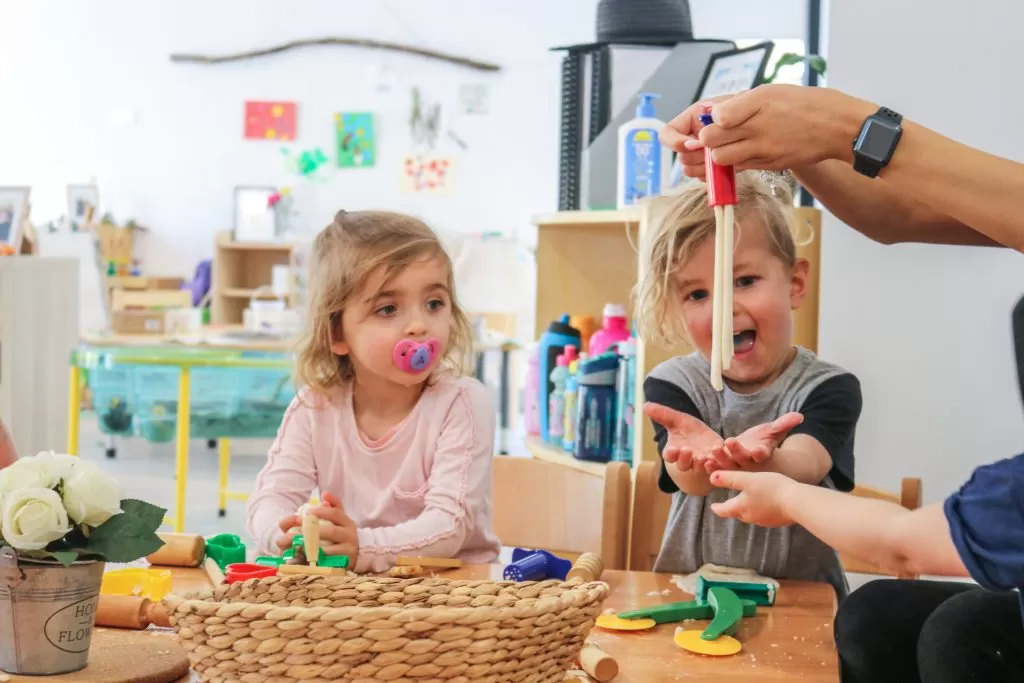
แนวทาง Reggio Emilia คืออะไร?
The Reggio Emilia approach offers a distinctive perspective on early childhood education, rooted in respect for the child as an active participant in their own development. It invites educators and families to rethink traditional roles and see learning as a dynamic, collaborative journey.
ปรัชญาแนวทางของเรจจิโอ เอมิเลีย
The Reggio Emilia approach is a child-centered educational philosophy that views children as strong, capable, and full of potential. Originating in Reggio Emilia, Italy, after World War II, it is grounded in the belief that children construct their knowledge through meaningful interactions with their environment, peers, and adults. This approach emphasizes hands-on, project-based learning, where children are encouraged to explore their interests through multiple forms of expression—such as art, music, movement, and dramatic play. Teachers act as facilitators and keen observers, documenting the learning process and collaborating with children to deepen understanding.
ประวัติและที่มาของแนวทางเรจจิโอเอมีเลีย
The Reggio Emilia Approach originated in Reggio Emilia, Italy, after World War II. The community, devastated by the war, sought to rebuild a more just and democratic society, starting with early childhood education.
ศูนย์กลางของการเคลื่อนไหวทางการศึกษาครั้งนี้คือ ลอริส มาลากุซซี่, เดอะ ผู้ก่อตั้งแนวทางเรจจิโอเอมีเลียนักจิตวิทยาและนักการศึกษา Malaguzzi จินตนาการถึงโรงเรียนที่เด็กๆ ถูกมองว่าเป็นผู้มีส่วนร่วมในการสร้างความรู้ ไม่ใช่ผู้รับคำแนะนำแบบเฉยๆ
ตลอดหลายทศวรรษที่ผ่านมา แนวทางดังกล่าวได้พัฒนาจนกลายมาเป็นแบบจำลองการศึกษาที่ได้รับการยอมรับทั่วโลก การเน้นย้ำถึงความคิดสร้างสรรค์ การคิดวิเคราะห์ และความสัมพันธ์ที่มีความหมายได้ส่งอิทธิพลต่อโรงเรียนอนุบาลทั่วทั้งยุโรป อเมริกาเหนือ และทั่วโลก
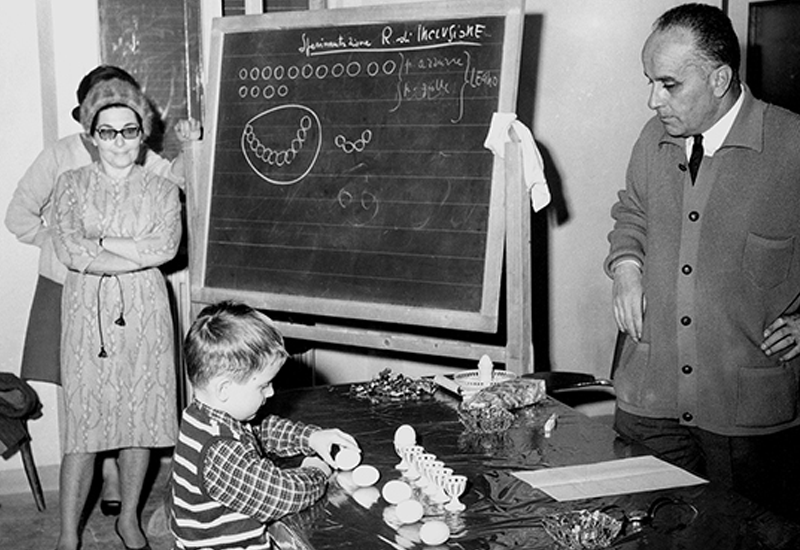
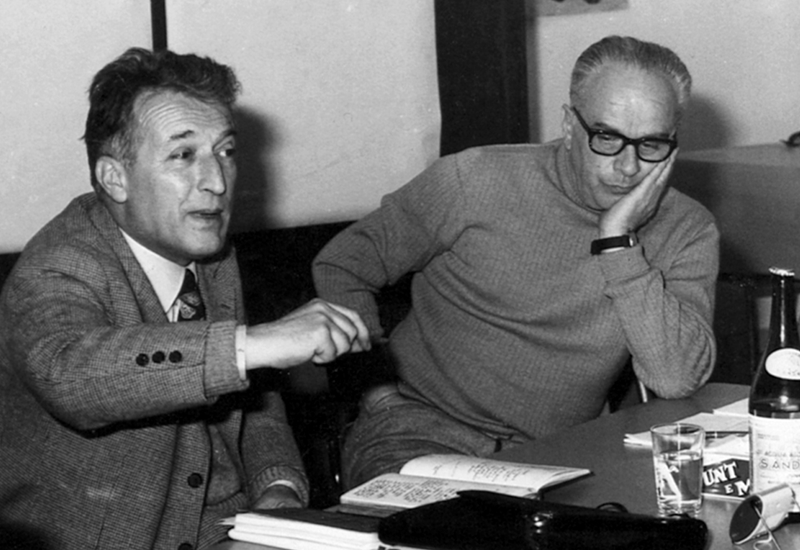
เรจจิโอ เอมิเลีย แอคโพรช vs มอนเตสซอรี่
The Reggio Emilia Approach and the Montessori Method are child-centered but differ in educational structure and philosophy. Reggio is inquiry-driven and collaborative; Montessori is structured and focused on independent mastery of materials.
| ด้าน | แนวทางเรจจิโอเอมีเลีย | วิธีการมอนเตสซอรี |
|---|---|---|
| รูปแบบการเรียนรู้ | ตามโครงการที่เกิดขึ้นทันที | ตามลำดับตามทักษะ |
| บทบาทของครู | ผู้เรียนร่วมและผู้ทำงานร่วมกัน | ผู้นำทางและผู้สังเกตการณ์ |
| สิ่งแวดล้อม | สุนทรียศาสตร์ ยืดหยุ่น เน้นเด็กเป็นศูนย์กลาง | เป็นระเบียบ เน้นวัสดุ |
| การแสดงออก | “ภาษา” สร้างสรรค์อันหลากหลาย | วัสดุสัมผัสที่กำหนด |
| การประเมิน | การจัดทำเอกสารและการสนทนา | ความเชี่ยวชาญผ่านการสังเกต |
Both approaches respect the child as an active learner. The right choice often depends on the educational focus on creative collaboration or structured independence.
Key Principles of the Reggio Emilia Approach
The Reggio Emilia Approach is built on a foundation of guiding principles that shape every aspect of the learning environment. These principles go beyond teaching techniques; they reflect a deep respect for children’s rights, capabilities, and ways of knowing.
ต่อไปนี้เป็นการแยกรายละเอียดหลักการสำคัญโดยย่อ ซึ่งจัดโครงสร้างจากแนวคิดที่สำคัญที่สุดไปจนถึงแนวคิดสนับสนุน โดยปฏิบัติตามรูปแบบการเขียนแบบพีระมิด เพื่อความชัดเจนและผลกระทบ
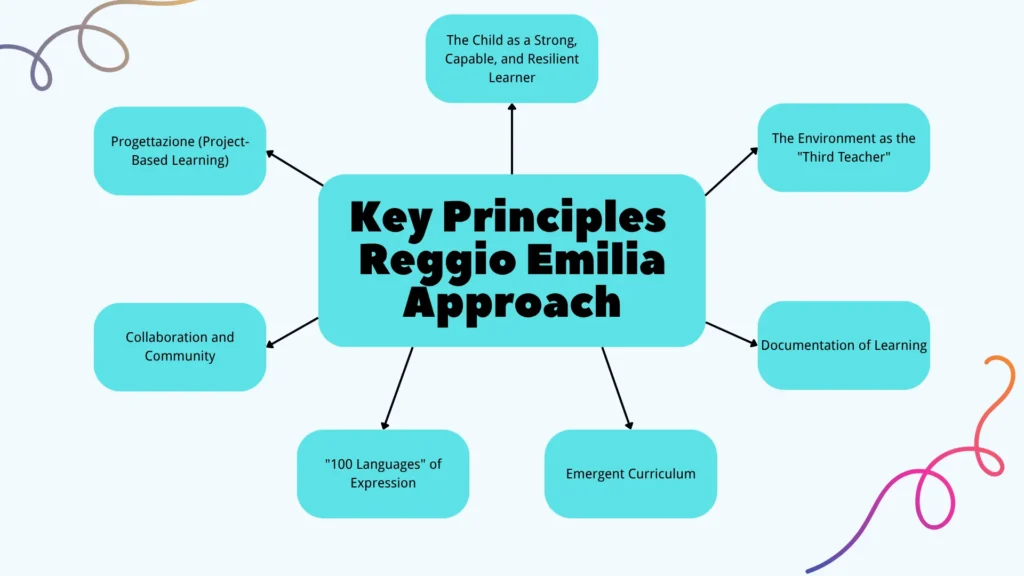
1. The Child as a Strong, Capable, and Resilient Learner
Children are viewed as competent individuals with the ability to construct their knowledge. They are not passive recipients of instruction, but active explorers with personal agency. Educators respect children’s ideas, encourage inquiry, and support learning through dialogue, reflection, and experimentation.
2. The Environment as the “Third Teacher”
The physical environment intentionally promotes exploration, autonomy, and interaction. Natural light, open-ended materials, and aesthetically considered spaces support focus, creativity, and collaboration. The classroom teaches, offering cues, challenges, and learning opportunities.
3. Documentation of Learning
Educators systematically observe and document children’s learning processes using photographs, transcriptions, and video recordings. This documentation is a tool for reflection, planning, and family communication. It makes children’s thinking visible and provides continuity and depth in curriculum development.
4. Emergent Curriculum
Curriculum arises from children’s interests and inquiries rather than from predetermined topics. Teachers observe children closely, identify themes in their play or questions, and then co-construct learning experiences that expand and deepen those interests. This approach maintains developmental relevance and student engagement.
5. The “Hundred Languages” of Expression
The approach recognizes that children express their understanding in multiple symbolic forms — visual arts, movement, music, storytelling, construction, and more. These forms are not secondary to verbal language; they are essential tools through which children represent, test, and refine ideas.
6. Collaboration and Community
Learning is considered a relational process. Children learn in interaction with peers, teachers, families, and the broader community. Cooperation, dialogue, and shared problem-solving are emphasized. Families are active participants in school life, and their involvement is integral to the educational experience.

7. Progettazione (Project-Based Learning)
Children engage in extended investigations, often collaboratively, centered on topics that emerge from their expressed interests. These projects support sustained inquiry and integrate multiple domains of learning. Teachers guide the process by introducing materials, posing questions, and helping children reflect on their work.
พร้อมที่จะออกแบบพื้นที่ที่สร้างแรงบันดาลใจในการเรียนรู้หรือยัง ติดต่อเราเพื่อสร้างโซลูชันเฟอร์นิเจอร์ที่ปรับแต่งให้เหมาะกับความต้องการในห้องเรียนของคุณ
ประโยชน์ของแนวทางเรจจิโอเอมีเลีย
The Reggio Emilia Approach is a practical, proven framework that delivers deep and lasting benefits for children, educators, and families. Its child-centered, inquiry-driven nature unlocks real developmental advantages that traditional models overlook.
1. ส่งเสริมความคิดสร้างสรรค์และการคิดวิเคราะห์
One of the Reggio Emilia Approach’s greatest strengths is its ability to cultivate creative, independent thinkers. Instead of memorizing facts or completing predefined tasks, children are invited to explore real-world questions that emerge from their curiosity.
By encouraging experimentation, self-expression, and open-ended inquiry, the approach helps children develop a flexible, problem-solving mindset. They learn to test ideas, make decisions, and reflect. Creativity here is not a separate subject. It’s embedded in every interaction, every project, and every material children engage with.

2. เสริมสร้างทักษะทางสังคมและการสื่อสาร
Children in Reggio-inspired classrooms constantly engage in conversation, group work, and collaborative decision-making. These interactions sharpen communication, listening, and negotiation skills from a very early age.
This collaborative environment encourages empathy and respect. Children learn to consider other perspectives, articulate their thoughts clearly, and find shared solutions within a socially supportive setting. Such skills are essential for academic success and navigating relationships in both school and life.
3. ส่งเสริมสติปัญญาทางอารมณ์และการควบคุมตนเอง
The Reggio Emilia Approach integrates emotional growth into the learning process. Under the guidance of observant educators, children are encouraged to express feelings, navigate challenges, and reflect on their emotional experiences.
Rather than disciplining behavior reactively, teachers help children understand their emotions, make thoughtful choices, and resolve conflicts with respect and autonomy. This builds stronger self-awareness and emotional resilience. As a result, children become more secure in themselves and better equipped to manage frustration, adapt to change, and build positive relationships.
4. ช่วยเพิ่มการมีส่วนร่วมและแรงจูงใจ
Because learning is based on what children care about, their focus and enthusiasm naturally increase. They are not simply following instructions; they are actively driving their learning journey. This sense of ownership fuels intrinsic motivation.
Children in Reggio-inspired environments show more persistence, initiative, and joy in their work. They dig deeper into topics, stay engaged longer, and take pride in their creations and discoveries. The Reggio Emilia Approach often leads to deeper understanding and better retention than traditional instruction.
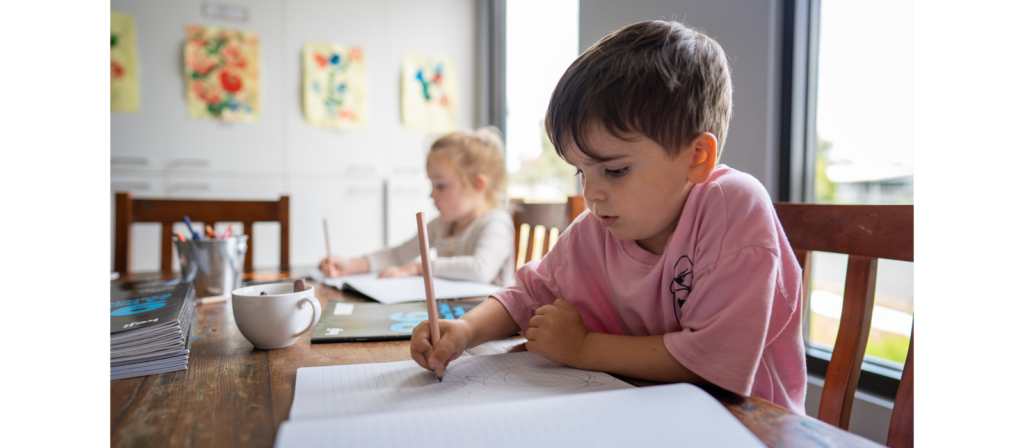
5. สร้างความร่วมมือที่แข็งแกร่งกับผู้ปกครอง
It values and integrates parents into the educational process. Families are not just informed but invited to participate, observe, and contribute. Through transparent communication, documentation of learning, and regular involvement, parents gain a clearer view of their child’s development.
This strengthens trust and builds a learning community around the child that extends from school to home. Children feel more supported and connected when families feel seen and included, and their growth accelerates meaningfully.
สภาพแวดล้อมในห้องเรียนตามแนวทางเรจจิโอเอมีเลีย
Referred to as the “third teacher”, the physical environment plays a central role in shaping how children explore, interact, and make meaning. Every element in the space is intentionally chosen to support inquiry, collaboration, and aesthetic appreciation.
1. พื้นที่ที่สะท้อนความเป็นเด็ก
Reggio-inspired classrooms are designed to feel like homes, studios, and laboratories combined. They are warm and welcoming and filled with natural light, plants, open shelving, and real-world materials. This design signals to children that they are respected and that their surroundings are worthy of care and attention.
Children can access a wide range of open-ended materials — such as fabric, clay, wood, wire, stones, and mirrors — inviting creativity and experimentation. Unlike traditional classrooms focusing on plastic toys or rote tools, these environments support flexible thinking and imaginative play.
Significantly, the classroom evolves. As children explore new interests, materials, and layouts are adjusted to reflect their questions and discoveries. In this way, the environment becomes a living expression of the children’s learning journey.
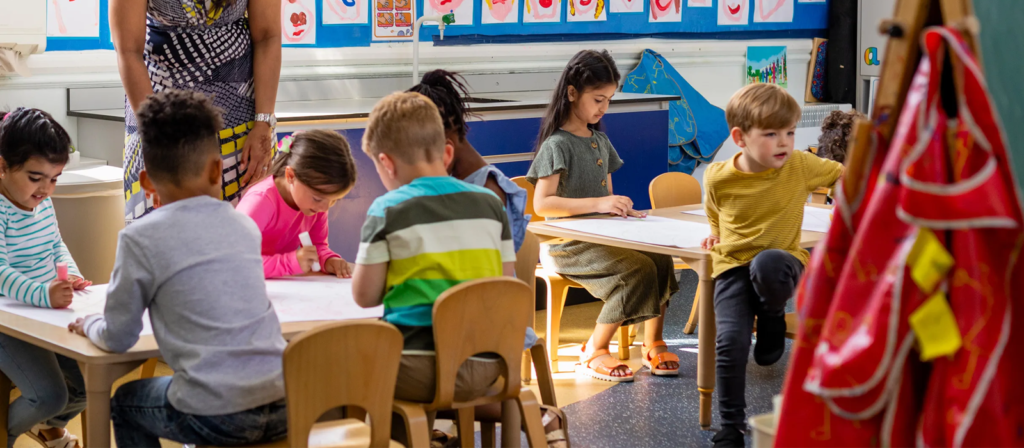
2. ความโปร่งใส การเข้าถึง และความสวยงาม
A hallmark of the Reggio Emilia classroom is literal and figurative transparency. Glass walls, interior windows, and display panels are common, allowing visibility between spaces and making learning visible to others. Children can observe peers in other rooms, teachers can monitor interactions, and families can witness the learning process unfolding.
Materials and tools are placed at child height, fostering independence and autonomy. Open shelves allow children to choose resources freely. Display areas showcase not only finished work but also learning in progress, including drawings, drafts, conversations, and questions. This reinforces the idea that the process is just as important as the product.
The aesthetics of the space matter deeply. A beautiful environment communicates value. It inspires children to take pride in their work and to engage more thoughtfully with their surroundings. This principle, that beauty invites learning, is one of the most distinct characteristics of the Reggio Emilia Approach.
3. Flexible Spaces That Support Movement and Possibility
A Reggio Emilia classroom is intentionally designed to support movement, flexibility, and multiple layers of use. Rather than assigning rigid functions to fixed areas, the space invites transformation throughout the day. A reading corner may become a theater stage, a science table may turn into a construction zone, and a quiet area may evolve into a site for collaborative storytelling. This adaptability empowers children to reimagine how they use the environment based on their interests and intentions.
The Reggio-inspired layout promotes open circulation. Pathways are clear, wide, and unobstructed, allowing children to move freely between individual work, small group projects, and whole-class gatherings. Materials are organized in ways that encourage spontaneous use, and furniture is light and rearrangeable to support shifting group sizes and learning modes. Instead of confining children to specific stations, the environment offers a continuous flow that mirrors the way children naturally explore.
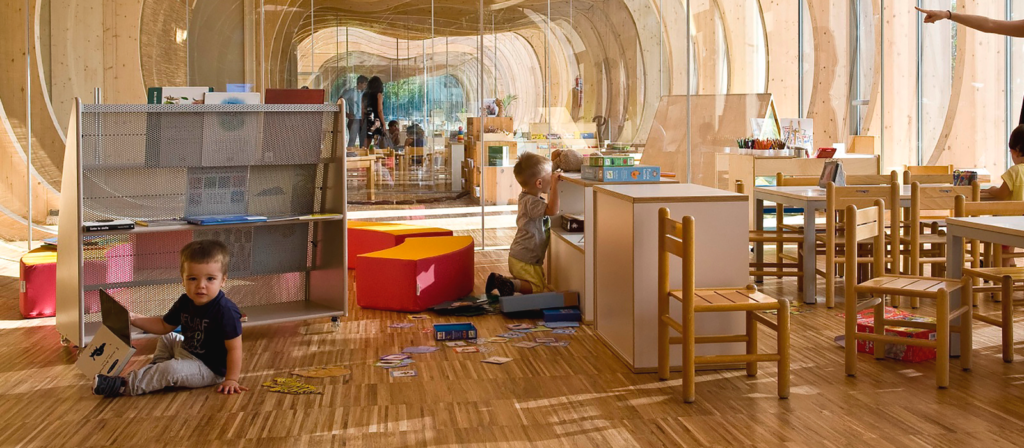
This fluid and layered design nurtures autonomy, decision-making, and self-regulation. Children learn to navigate space with purpose, make choices about where and how to work, and adapt their thinking as contexts change. The result is a dynamic classroom where the environment itself becomes a partner in discovery, supporting learning that is physical, intellectual, and creative all at once.
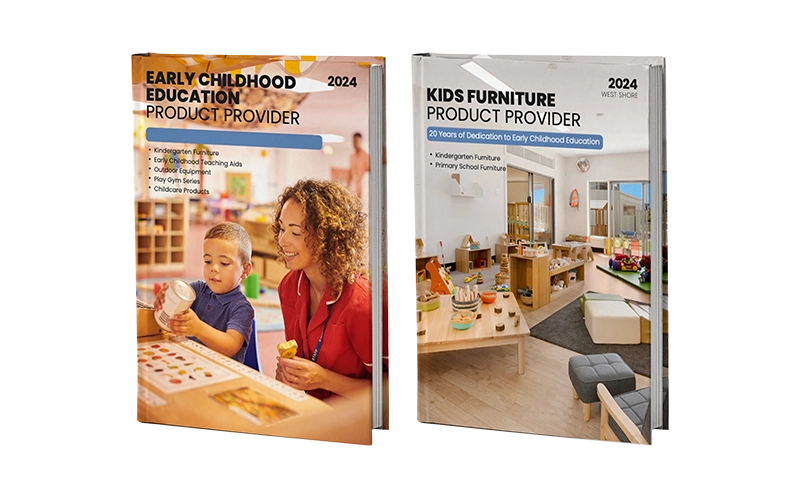
How to Define Spaces and Equip a Reggio-Inspired Classroom
Designing a Reggio-inspired classroom begins with the belief that the environment plays an active role in a child’s learning journey. Every space should reflect intention, purpose, and flexibility, allowing for both individual exploration and group collaboration. Rather than filling a room with furniture and materials, educators define each area with care, guided by how children move, interact, and express themselves.
1. Begin with the Child’s Perspective
Start by observing how children move, play, and interact. Consider their eye level, their reach, and the way they engage with their surroundings. All furniture, shelving, and materials should be placed to support independence. The room should feel welcoming, not overwhelming. By designing from the child’s point of view, the environment immediately becomes more accessible, comfortable, and empowering.
2. Define Learning Zones with Intention and Flexibility
Divide the room into zones that support different types of learning experiences. These might include an atelier for artistic expression, a construction area for building, a reading nook for quiet time, and a science table for exploration. Use soft spatial markers such as rugs, shelving, or lighting changes to separate zones without blocking flow. Keep in mind that zones should not be static. They can evolve, blend, and shift over time.
3. Choose Flexible, Natural Furniture That Supports Autonomy
The right furniture does more than fill a space — it defines how children interact with it. At เวสท์ชอร์เฟอร์นิเจอร์, we produce preschool and kindergarten furniture specifically tailored to Reggio-inspired environments. Our designs prioritize modularity, accessibility, and natural aesthetics, using wood textures, smooth finishes, and rounded forms that invite exploration. Open-shelf units, mobile storage, adjustable tables, and seating scaled to the child’s body enable children to independently access materials, transition between zones, and manage their learning process. In the Reggio Emilia philosophy, furniture is not passive — it’s a pedagogical tool that quietly encourages agency and curiosity.
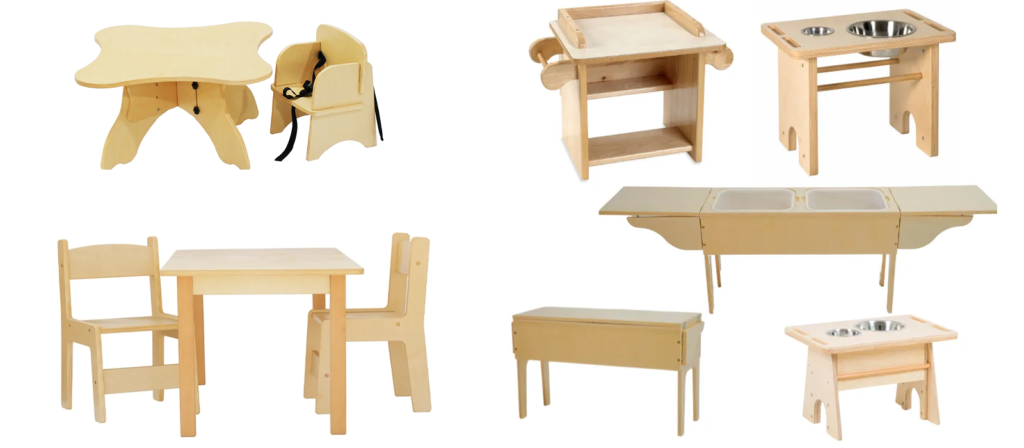
4. Creating Soft Boundaries for Flow
In Reggio Emilia classrooms, space isn’t static — it’s responsive. Defining learning zones starts by observing how children naturally move, gather, and explore. Rather than using fixed dividers or barriers, educators create “soft boundaries” using child-height shelving, rugs, lighting, and material displays. These visual and functional cues gently suggest purpose without limiting flexibility. The layout must support visibility, collaboration, and the child’s autonomy, essential values in the Reggio Emilia Approach. A thoughtful arrangement allows the environment to become an active participant in learning, rather than just a backdrop.

5. Equip Each Zone with Open-Ended, Purposeful Learning Materials
Beyond layout and furniture, the tools within each zone give meaning to the space. We offer a range of educational materials — including natural blocks, loose parts kits, sensory trays, mirror panels, and light table tools — designed to support creativity, scientific observation, and expressive play. These open-ended materials allow children to represent their thinking across disciplines and in multiple “languages,” a concept central to the Reggio Emilia Approach. Whether a child is documenting shadows, constructing habitats, or telling visual stories with clay, the right tools turn the environment into a place of endless possibility.
6. Allow the Environment to Evolve
A Reggio-inspired classroom is never static. As children’s interests change, the space must shift with them. Rearranging materials, rotating learning areas, or adding provocations based on new inquiries shows that the environment is alive. This flexibility supports curiosity and ensures that the classroom continues to reflect the children who inhabit it. A Reggio-inspired classroom is never finished. It is always in conversation with the children inside it.
โซนสำคัญในห้องเรียนที่ได้รับแรงบันดาลใจจากเรจจิโอ
A Reggio-inspired classroom is not arranged by chance. Every space is intentionally designed to encourage exploration, collaboration, and creative expression. From the light and shadow center to the art studio, the classroom gives multiple pathways for children to communicate and learning. These zones are not rigid or static. They are flexible, evolving spaces that respond to children’s interests and inquiries.
1. ห้องศิลปะ (The Atelier)
The atelier is a central hub where creativity takes shape. It is filled with high-quality art materials, natural elements, and open-ended tools. It functions as a creative studio that values process over product, inviting children to paint, sculpt, build, and invent. Rich in texture, color, and possibility, the atelier supports cognitive, emotional, and sensory development while encouraging collaboration and individual expression through the many “languages” of art.
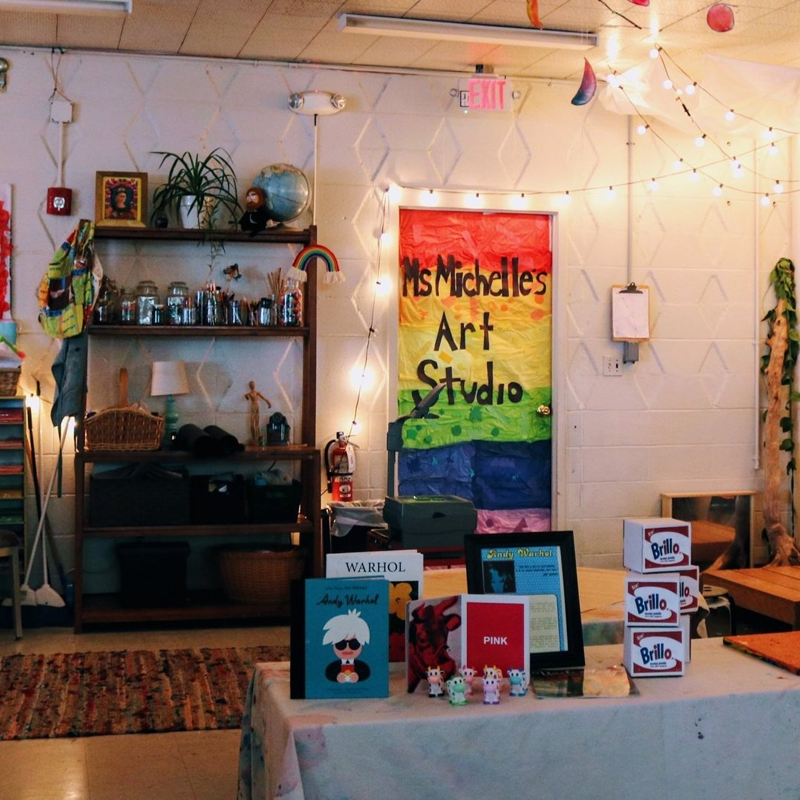
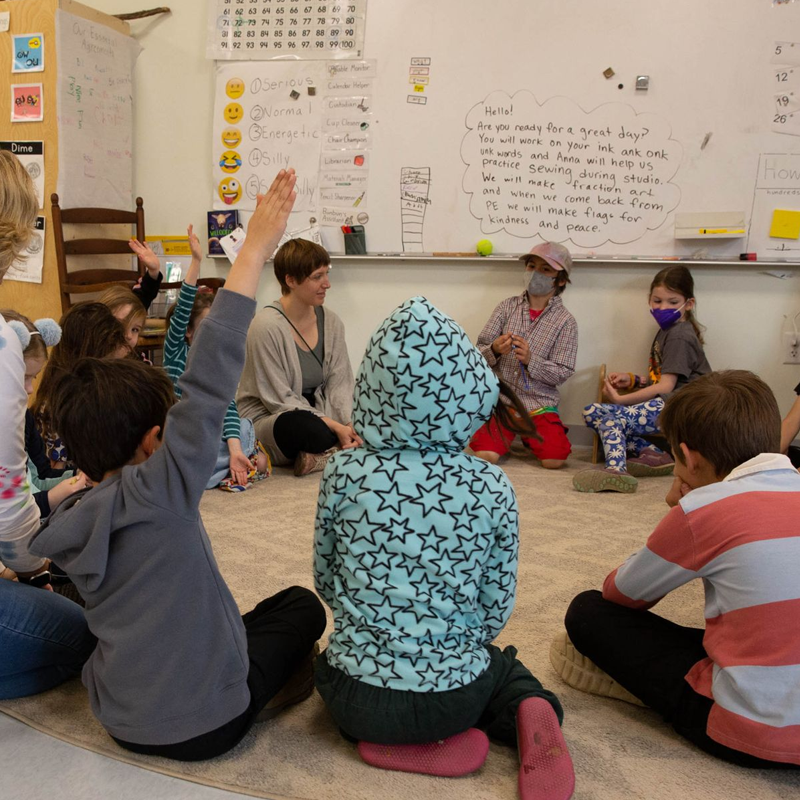
2. ลานหน้าศาลากลาง (บริเวณประชุมกลาง)
The Piazza serves as the social hub of the classroom. Inspired by the Italian town square, it is a shared space where children gather for conversation, group projects, morning meetings, and storytelling. It reflects the belief that learning is inherently social and that children benefit from sharing ideas within a community.
3. มุมเรียนรู้และห้องทดลองขนาดเล็ก
Learning corners and mini-labs provide focused environments for inquiry into specific domains, such as science, construction, or storytelling. These smaller spaces encourage self-directed learning by allowing children to choose areas that align with their current interests. The design supports deep engagement, as children can explore materials and ideas without interruption. Children also build independence as they manage time and tools during exploration.
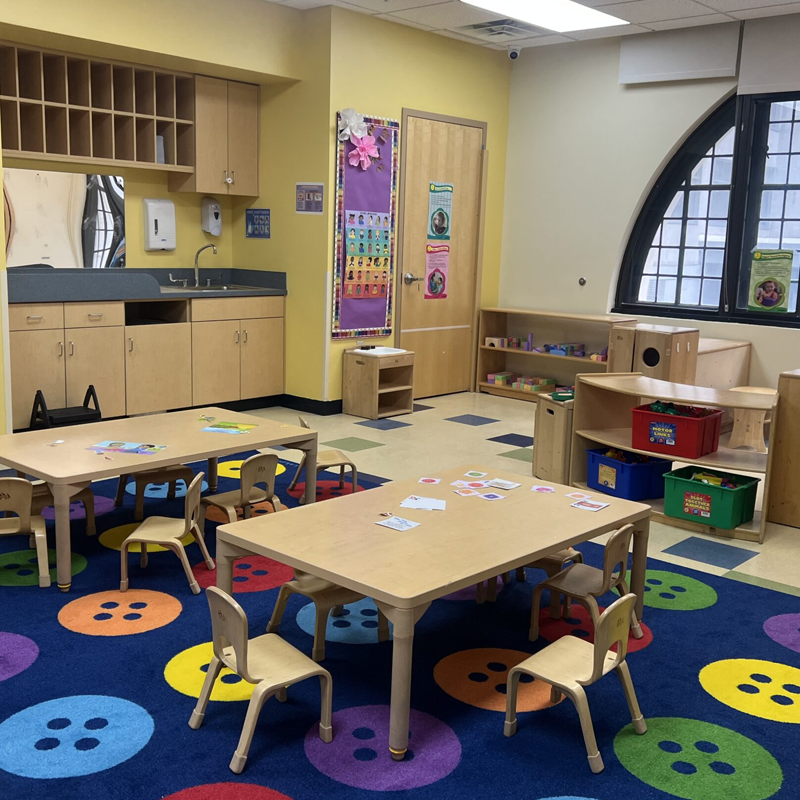

4. The Light and Shadow Center
Light is considered a powerful medium in Reggio-inspired learning. The light and shadow center gives children the chance to manipulate reflections, projections, and shadows, sparking curiosity about natural phenomena and abstract concepts. Through hands-on manipulation of light sources and materials, children engage in discovery and visual storytelling.
5. Quiet and Reflective Spaces
Quiet and reflective spaces respect each child’s rhythm by offering comfort and stillness within a busy classroom environment. These zones allow children to process their emotions, engage in individual reading or journaling, and build inner focus. By providing an intentional retreat, educators send the message that reflection is just as valuable as activity. Such spaces also support children in developing self-regulation and emotional awareness.
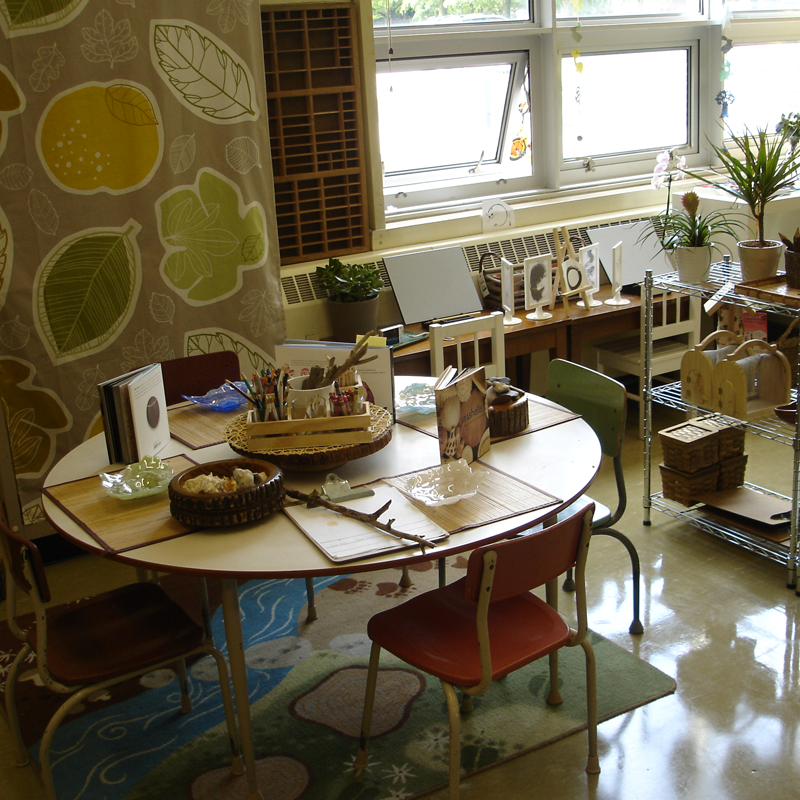
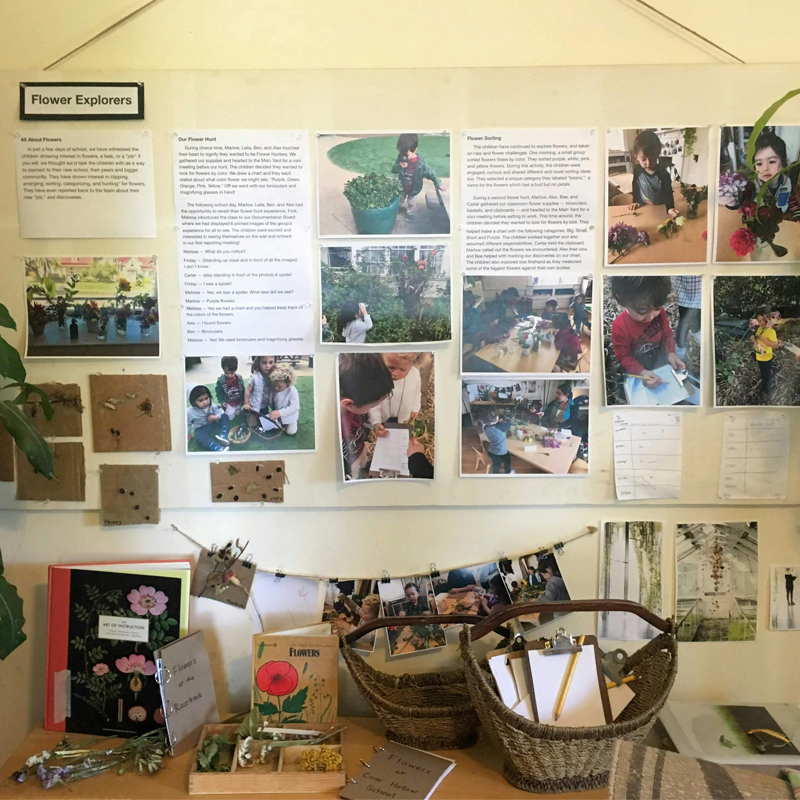
6. Display and Documentation Areas
Documentation is central to Reggio-inspired learning, and these areas serve as living records of children’s work. By displaying drawings and photos, teachers make the learning process visible to children, parents, and visitors. This practice not only validates children’s efforts but also encourages ongoing dialogue about their discoveries. Documentation areas evolve with projects, reinforcing that learning is dynamic, collaborative, and deeply connected to children’s experiences.
7. Natural and Outdoor Zones
Outdoor environments and natural zones are seen as extensions of the classroom, providing children with direct encounters with nature. Here, they engage with plants, weather, and natural materials, developing respect and curiosity for the living world. These spaces invite exploration of seasonal changes, life cycles, and environmental stewardship. By combining movement, sensory experiences, and observation, outdoor zones give children opportunities to learn holistically.
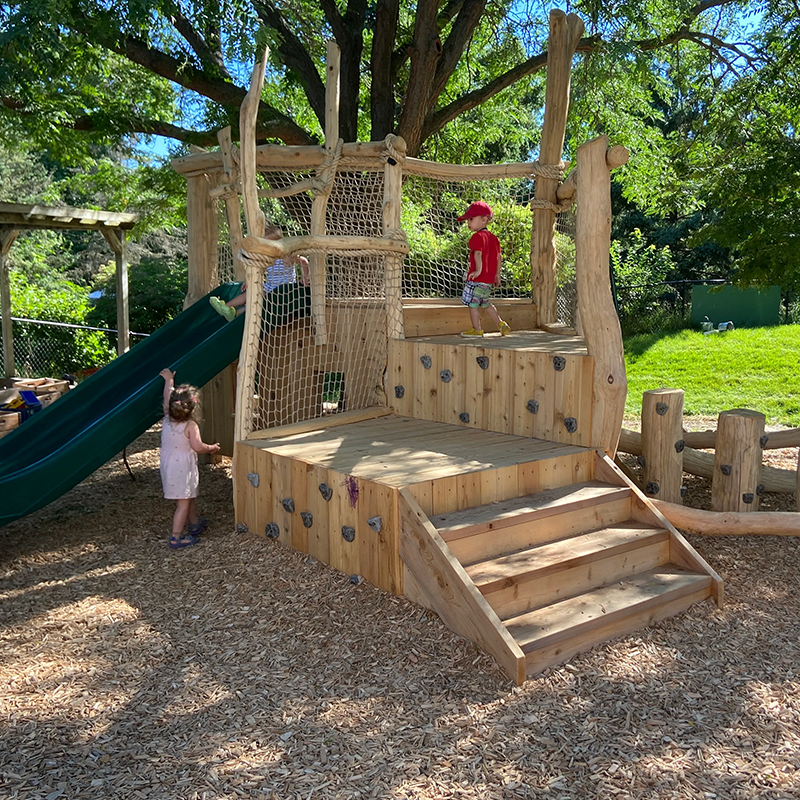
พร้อมที่จะออกแบบพื้นที่ที่สร้างแรงบันดาลใจในการเรียนรู้หรือยัง ติดต่อเราเพื่อสร้างโซลูชันเฟอร์นิเจอร์ที่ปรับแต่งให้เหมาะกับความต้องการในห้องเรียนของคุณ
Teacher’s Role in the Reggio Emilia Approach
ในแนวทางเรจจิโอเอมีเลีย ครูไม่ใช่ผู้มีอำนาจตามแบบแผนที่คอยถ่ายทอดความรู้จากหน้าห้องเรียน แต่ครูถูกมองว่าเป็นผู้วิจัย ผู้ทำงานร่วมกัน ผู้รับฟัง และผู้ยุยงปลุกปั่น — ผู้ที่เรียนรู้ไปพร้อมกับเด็ก ไม่ใช่อยู่เหนือเด็ก บทบาทที่กำหนดใหม่นี้เป็นศูนย์กลางของความสำเร็จของปรัชญาเรจจิโอและทำให้แตกต่างจากการศึกษาปฐมวัยแบบเดิม
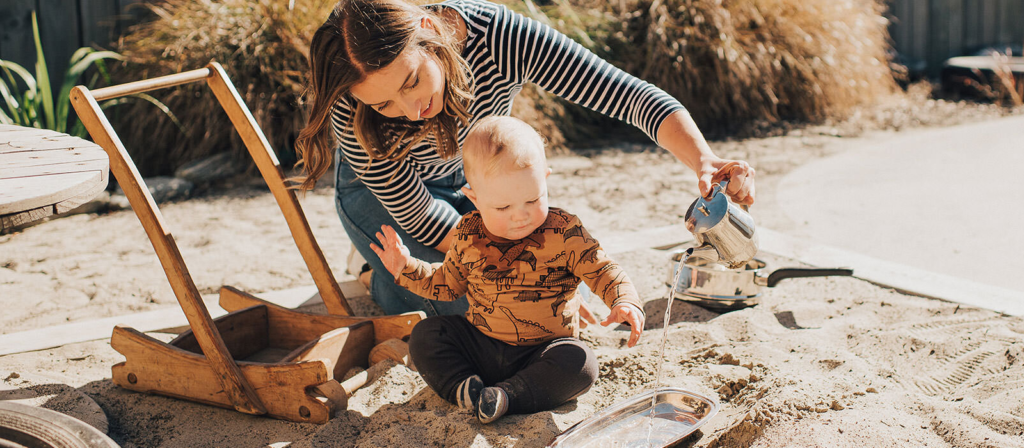
1. ผู้สังเกตและผู้ฟังก่อน
ครูเรจจิโอเอมีเลียเริ่มต้นด้วยการสังเกตอย่างระมัดระวัง แทนที่จะรีบเร่งกำกับหรือแก้ไข ครูจะสังเกตอย่างใกล้ชิดเพื่อทำความเข้าใจว่าเด็กคิดอย่างไร อะไรที่ทำให้พวกเขาตื่นเต้น คำถามที่พวกเขาถาม และพวกเขาเริ่มสร้างทฤษฎีอะไรขึ้นมา
Through attentive listening, teachers capture the intellectual processes behind the play, identifying the patterns, hypotheses, and relationships children naturally explore. These observations then guide the planning of future activities and the design of the learning environment.
This approach demands a high level of professional sensitivity. Teachers are not imposing a lesson plan; they uncover one already within the children.
2. ผู้ร่วมวิจัยและผู้ทำงานร่วมกัน
ในห้องเรียนเรจจิโอ ครูจะร่วมเรียนรู้กับเด็กๆ โดยจะร่วมกันค้นคว้า ตั้งคำถามปลายเปิด ทดลองกับสื่อการเรียนรู้ และสะท้อนการค้นพบต่างๆ ร่วมกัน การทำเช่นนี้ทำให้ครูเป็นหุ้นส่วนในการค้นคว้า ไม่ใช่เป็นเพียงผู้นำทางเท่านั้น
Rather than “delivering” knowledge, teachers encourage children to build their understanding. For example, if children wonder why rain makes puddles, the teacher might suggest they collect water on different surfaces, draw what they see, or build a water table. The teacher is not to give them the answer, but to extend their thinking.
This shared inquiry creates a culture of mutual respect. Children feel their voices matter because adults aren’t telling them what to think — they think with them.
3. ผู้จัดทำเอกสารและผู้สื่อสาร
A unique and vital responsibility of the Reggio Emilia teacher is documentation. Teachers record children’s dialogue, photograph their work, and reflect on the learning process. This is not simply for assessment. It is a way to make learning visible, shareable, and open to reflection.
Documentation allows teachers to revisit ideas with children, track development over time, and communicate meaningfully with families and colleagues. These records become part of the learning environment. They are displayed on walls, included in portfolios, and used during parent-teacher conversations to deepen understanding and collaboration.
Through documentation, the teacher reinforces the value of each child’s thinking while engaging in continuous professional self-evaluation.
ครูในแนวทางเรจจิโอเอมีเลียไม่ได้นิ่งเฉย แต่พลังของพวกเขาไม่ได้มาจากการควบคุม แต่มาจากความเอาใจใส่ ความอยากรู้อยากเห็น และความเคารพ พวกเขาชี้นำโดยทำตาม สอนโดยการฟัง และนำโดยการเรียนรู้
เป็นบทบาทที่ท้าทายแต่ก็ให้ผลตอบแทนคุ้มค่า เมื่อครูวางตำแหน่งตัวเองในฐานะผู้สร้างความรู้ร่วม พวกเขาจะทำให้เด็กๆ มีอำนาจในการเป็นเจ้าของการเรียนรู้ของตนเอง และพัฒนาความมั่นใจในการสำรวจโลกด้วยจุดมุ่งหมายและความมหัศจรรย์
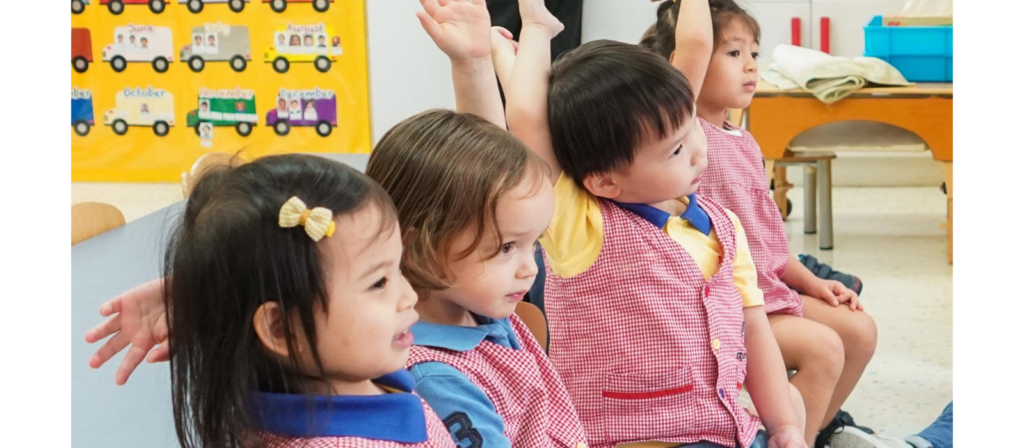
การประเมินและการจัดทำเอกสารตามแนวทางเรจจิโอเอมีเลีย
In the Reggio Emilia Approach, assessment is not a test at the end of a unit or a checklist of skills. Instead, it is a continuous, qualitative, and collaborative process known as documentation. This approach honors the complexity of children’s thinking by making their learning visible to themselves, teachers, and families.
1. การจัดทำเอกสารเป็นเครื่องมือการเรียนรู้
Teachers in Reggio Emilia classrooms systematically observe children’s interactions, questions, creations, and conversations. They capture these moments through written notes, audio recordings, photographs, video, and children’s work samples.
But documentation is not simply collecting evidence; it’s interpreting and reflecting. Educators use these artifacts to analyze how children construct knowledge, what theories they develop, and how their ideas evolve. It also helps identify new opportunities to extend inquiry.
กระบวนการนี้เปลี่ยนการประเมินผลให้กลายเป็นเครื่องมือแบบไดนามิกสำหรับการพัฒนาหลักสูตร เนื่องจากการบันทึกข้อมูลจะส่งผลโดยตรงต่อการวางแผนในอนาคต กระบวนการนี้สนับสนุนรูปแบบที่การสอนตอบสนอง ไม่ใช่มีการกำหนดบทไว้ล่วงหน้า
2. การทำให้การเรียนรู้เป็นที่ประจักษ์
A key purpose of documentation is to make children’s thinking and learning visible, not only to teachers but also to children and families. Visual displays that include photos, transcripts of dialogue, and project boards are commonly found throughout Reggio-inspired environments.
When children see their words and work displayed on the walls, it affirms their ideas and supports metacognition. This ability to reflect on their own learning helps them revisit past thinking, make meaningful revisions, and form new connections that deepen understanding.
For parents, this visibility builds trust and deepens involvement. Rather than waiting for end-of-term reports, they are regularly invited into the learning journey through exhibitions, journals, and shared reflections.
3. การคิดทบทวนการประเมินแบบดั้งเดิม
แนวทางเรจจิโอเอมีเลียจงใจปฏิเสธการทดสอบมาตรฐาน เกรด และเกณฑ์มาตรฐานที่เข้มงวดในช่วงวัยเด็ก แทนที่จะถามว่า "เด็กได้คะแนนเท่าไร" นักการศึกษาเรจจิโอจะถามว่า:
- เด็กมีความอยากรู้เรื่องอะไร?
- เด็กมีความเข้าใจโลกได้อย่างไร?
- ทักษะอะไรที่เกิดขึ้นจากการสืบสวนของพวกเขา?
- คุณค่าใดบ้างที่ถูกแสดงออกมาผ่านทางเลือกของพวกเขา?
This shift from evaluation to interpretation respects the complexity of learning. It values not what a child has memorized but how they think, question, collaborate, and create.
It also demands more from educators. Adequate documentation requires time, focus, and professional insight. However, the reward is a more authentic and holistic view of each child’s development.
In the Reggio Emilia Approach, assessment is woven into the fabric of daily life. It is not something done to children, but something done with them. It becomes a shared reflection on learning that fosters deeper insight, strengthens relationships, and supports a culture of continuous growth.
It is not about measuring learning. It is about seeing it, honoring it, and building upon it.
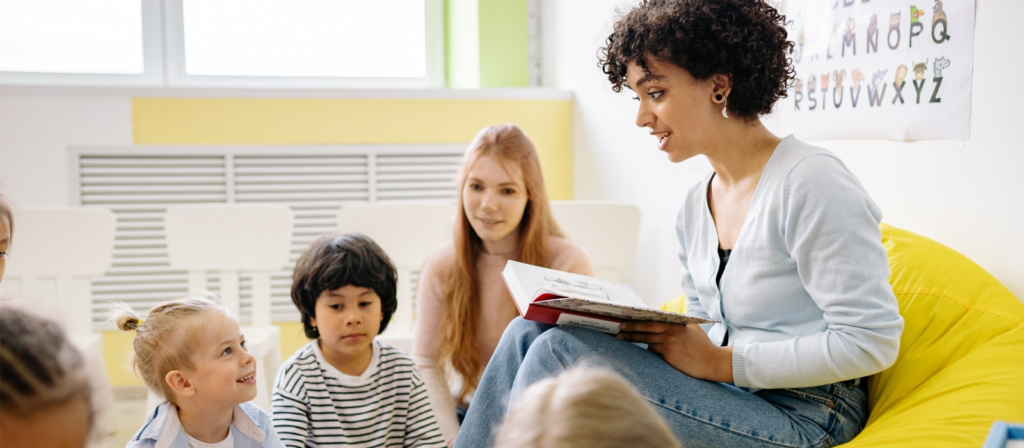
พร้อมที่จะออกแบบพื้นที่ที่สร้างแรงบันดาลใจในการเรียนรู้หรือยัง ติดต่อเราเพื่อสร้างโซลูชันเฟอร์นิเจอร์ที่ปรับแต่งให้เหมาะกับความต้องการในห้องเรียนของคุณ
ความร่วมมือระหว่างผู้ปกครองในแนวทางเรจจิโอเอมีเลีย
One of the Reggio Emilia Approach’s most distinctive and potent features is its view of parents not as clients or passive observers but as active partners in their child’s learning journey. This deep commitment to family involvement is not a side note but a core pillar of the philosophy. The school, the teacher, and the parent form a triangle of trust, each playing a vital role in shaping the child’s development.
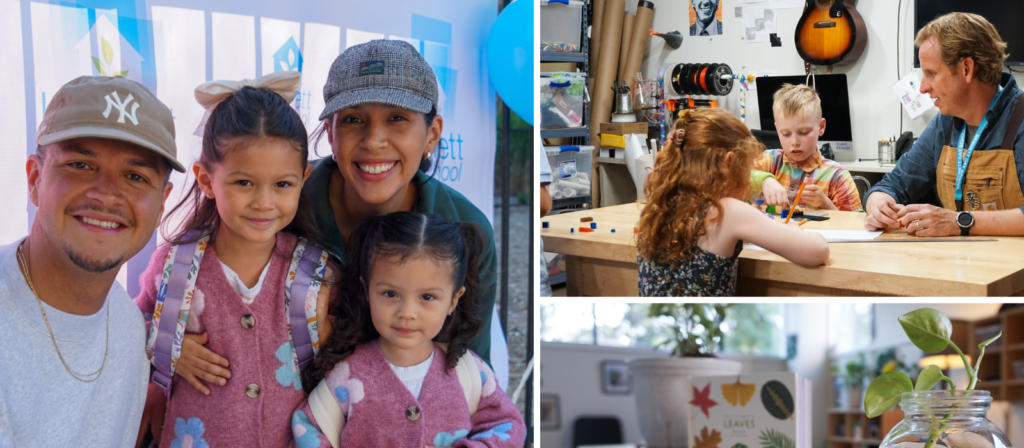
1. ผู้ปกครองในฐานะผู้ร่วมให้การศึกษา
In Reggio-inspired schools, parents are seen as the first and most influential educators in a child’s life. Rather than being told what the school is doing, families are invited to participate in shaping the learning environment and curriculum.
ซึ่งอาจรวมถึง:
- การเข้าร่วมหารือและวางแผนการประชุมกับครูเป็นประจำ
- การนำเนื้อหาหรือเรื่องราวจากที่บ้านมาเสริมแต่งโครงการในชั้นเรียน
- การเข้าร่วมนิทรรศการผลงานเด็ก
- Helping co-document or interpret their child’s thinking
This collaborative approach builds mutual respect and allows educators to better understand the cultural, emotional, and intellectual context each child brings to the classroom.
2. การสื่อสารที่โปร่งใสและการสะท้อนร่วมกัน
A hallmark of the Reggio Emilia Approach is its use of documentation to promote open and transparent communication with families. Teachers share learning journals, photo displays, transcribed conversations, and even video snippets not as proof of productivity, but as windows into the child’s mind.
ผู้ปกครองควรพิจารณาเอกสารนี้ ถามคำถาม เสนอข้อมูลเชิงลึก และแบ่งปันข้อสังเกตจากที่บ้าน การสนทนาแบบสองทางนี้ช่วยสร้างความสอดคล้องระหว่างค่านิยมของโรงเรียนและครอบครัว ทำให้เด็กรู้สึกปลอดภัยและได้รับการสนับสนุนมากขึ้นในทั้งสองสภาพแวดล้อม
Regular parent-teacher meetings in Reggio settings are less about performance and more about shared meaning-making, understanding who the child is, what excites them, and how to support them as a team.
3. การสร้างชุมชนผ่านความร่วมมือ
The Reggio Emilia philosophy extends beyond the individual classroom. It actively fosters community among families, encouraging collective ownership of the educational space. Parents may work together on projects, school-wide installations, or cultural celebrations.
Many Reggio schools even include parent spaces within the school, where families can meet, share coffee, or exchange ideas. This physical integration signals a more profound truth: families are not visitors, but respected learning community members.
The result is a culture in which children see that learning is not confined to school walls. They feel the support of a larger, interconnected web of adults who listen to them, learn from them, and grow with them.
In the Reggio Emilia Approach, partnering with parents is not just beneficial but essential. When families and educators collaborate authentically, the child stands at the center of a strong, supportive network. This foundation enhances learning and builds the kind of trust, empathy, and shared responsibility that defines a truly human approach to education.
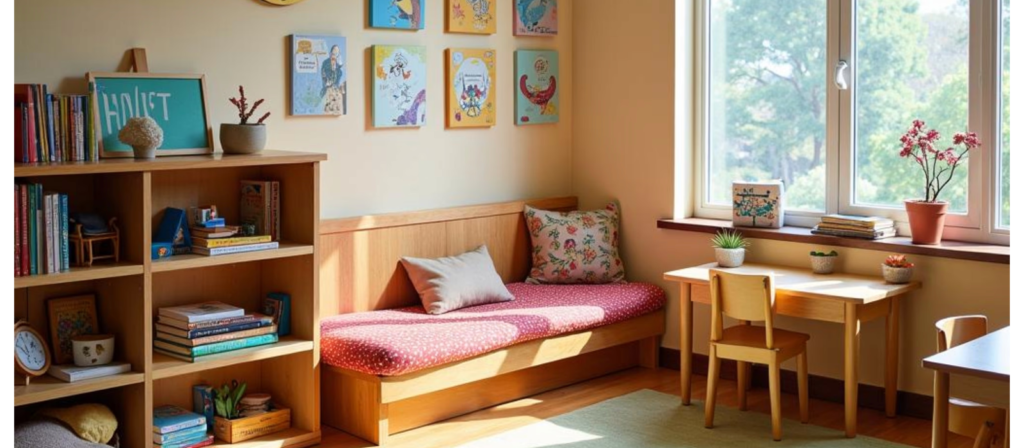
การนำแนวทาง Reggio Emilia ไปใช้ที่บ้าน
แนวทางเรจจิโอเอมีเลียไม่ได้จำกัดอยู่แค่ในโรงเรียนเท่านั้น แต่ยังสามารถเปลี่ยนวิธีการเรียนรู้และเติบโตของเด็กๆ ที่บ้านได้อีกด้วย สำหรับผู้ปกครองและผู้ดูแล การใช้หลักการเรจจิโอที่บ้านหมายถึงการสร้างสภาพแวดล้อมที่เด็กๆ รู้สึกได้รับการรับฟัง เคารพ และสำรวจได้อย่างอิสระ แนวทางนี้ไม่จำเป็นต้องใช้วัสดุราคาแพงหรือสตูดิโอเฉพาะ เพียงแค่เลือกอย่างตั้งใจ พื้นที่เปิดโล่งสำหรับความคิดสร้างสรรค์ และทัศนคติที่ให้ความสำคัญกับเด็กในฐานะผู้เรียนที่มีความสามารถและอยากรู้อยากเห็น
1. สร้างสภาพแวดล้อมที่ยืดหยุ่นและสร้างแรงบันดาลใจ
เริ่มต้นด้วยการคิดทบทวนพื้นที่ทางกายภาพใหม่ ในบ้านที่ได้รับแรงบันดาลใจจากเรจจิโอ สิ่งแวดล้อมถือเป็นครูคนที่สาม คุณสามารถสร้างโซนการเรียนรู้ที่เล็กและยืดหยุ่นได้โดยใช้สิ่งที่คุณมีอยู่แล้ว เช่น มุมสำหรับวาดรูป ชั้นวางสำหรับชิ้นส่วนที่แยกได้และวัสดุธรรมชาติ โต๊ะสำหรับสร้างหรือคัดแยก
จัดวางวัสดุต่างๆ ให้มองเห็นได้และหยิบใช้ได้สะดวก ใช้ตะกร้าหรือชั้นวางแบบเปิดเพื่อให้เด็กๆ เลือกสิ่งที่สนใจได้เอง จัดเตรียมวัสดุต่างๆ เช่น กระดาษ ดินเหนียว ผ้า กระดุม กิ่งไม้ กระดาษแข็ง หรือแม้แต่ภาชนะรีไซเคิล วัสดุเหล่านี้จะช่วยให้เด็กๆ ได้เล่นอย่างอิสระ ซึ่งจะช่วยเสริมสร้างจินตนาการและการแก้ปัญหา
แสงธรรมชาติ ต้นไม้ กระจก และสุนทรียศาสตร์ที่เรียบง่ายสามารถสร้างความแตกต่างได้มาก พื้นที่ที่สวยงามและตั้งใจจะบอกเด็กๆ ว่า “นี่คือสถานที่ที่ความคิดของคุณมีความสำคัญ”
2. Follow the Child’s Interests
Reggio Emilia learning is child-led. At home, this means observing your child’s play and questions and extending those interests with gentle prompts and resources. If your child is fascinated by insects, for example, you could:
- เก็บใบไม้และแว่นขยายเพื่อสังเกตแมลงกลางแจ้ง
- วาดที่อยู่อาศัยของแมลงเข้าด้วยกัน
- สร้างแมลงด้วยดินน้ำมันหรือวัสดุรีไซเคิล
- อ่านหนังสือหรือสร้างเรื่องราวเกี่ยวกับแมลง
The key is to avoid rushing to teach or correct. Instead, be a co-learner, explore the topic with your child, ask questions, and support their discoveries. Let their curiosity guide the direction.
3. ส่งเสริมการแสดงออกในรูปแบบต่างๆ
Support your child’s thinking through the hundred languages — drawing, music, movement, building, storytelling, and more. Avoid focusing on perfect results. Instead, ask reflective questions like:
- “คุณคิดอะไรอยู่ตอนที่ทำสิ่งนี้?”
- “เราจะลองอะไรต่อไปได้บ้าง?”
- “คุณเล่าเรื่องภาพวาดของคุณให้ฉันฟังได้ไหม?”
These questions affirm their thought process and invite deeper reflection. You can also keep a portfolio of their work, not for judgment, but to revisit and reflect on their growth over time.
Even very young children benefit from this: when you document their marks, movements, or phrases, you convey that their ideas are worth remembering.
4. สร้างวัฒนธรรมแห่งความเคารพและความร่วมมือ
Implementing the Reggio Emilia Approach at home isn’t just about materials and values. Respect your child’s voice, include them in decisions, and model active listening. You can also involve them in everyday tasks like cooking, gardening, or setting up play areas, treating these not as chores but as meaningful learning experiences.
เมื่อเด็กๆ รู้สึกว่าตนเองเป็นส่วนหนึ่ง พวกเขาก็จะมั่นใจ มีอิสระ และมีอัตลักษณ์ที่เข้มแข็งขึ้น สมาชิกในครอบครัวจะกลายมาเป็นผู้ทำงานร่วมกันในการเรียนรู้ ไม่ใช่เพียงแต่เป็นผู้มีอำนาจเท่านั้น
Bringing the Reggio Emilia Approach home doesn’t mean replicating a preschool. It means creating a home where exploration is welcomed, creativity is nurtured, and children are trusted to lead their learning.
การเปลี่ยนแปลงเล็กๆ น้อยๆ ในวิธีที่เราฟัง สังเกต และโต้ตอบกัน สามารถสร้างความแตกต่างอย่างถาวรในวิธีที่เด็กๆ มองเห็นตัวเอง ไม่ใช่แค่ในฐานะนักเรียนเท่านั้น แต่ในฐานะนักคิดและนักสร้างสรรค์ที่มีความสามารถอีกด้วย
พร้อมที่จะออกแบบพื้นที่ที่สร้างแรงบันดาลใจในการเรียนรู้หรือยัง ติดต่อเราเพื่อสร้างโซลูชันเฟอร์นิเจอร์ที่ปรับแต่งให้เหมาะกับความต้องการในห้องเรียนของคุณ
กิจกรรมแนวทางเรจจิโอเอมีเลีย
ในแนวทางเรจจิโอเอมีเลีย กิจกรรมไม่ใช่บทเรียนสำเร็จรูปหรือภารกิจมาตรฐาน แต่เป็นการสำรวจที่มีความหมายซึ่งเกิดจากความอยากรู้อยากเห็นตามธรรมชาติของเด็ก กิจกรรมเหล่านี้ไม่มีขอบเขตจำกัด อิงตามโครงการ และหยั่งรากลึกในประสบการณ์ในโลกแห่งความเป็นจริง เป้าหมายไม่ได้มุ่งแค่ "สอน" วิชาใดวิชาหนึ่งเท่านั้น แต่เพื่อดึงดูดให้เด็กๆ มีส่วนร่วมในการคิด ตั้งคำถาม สร้างสรรค์ และทำงานร่วมกัน
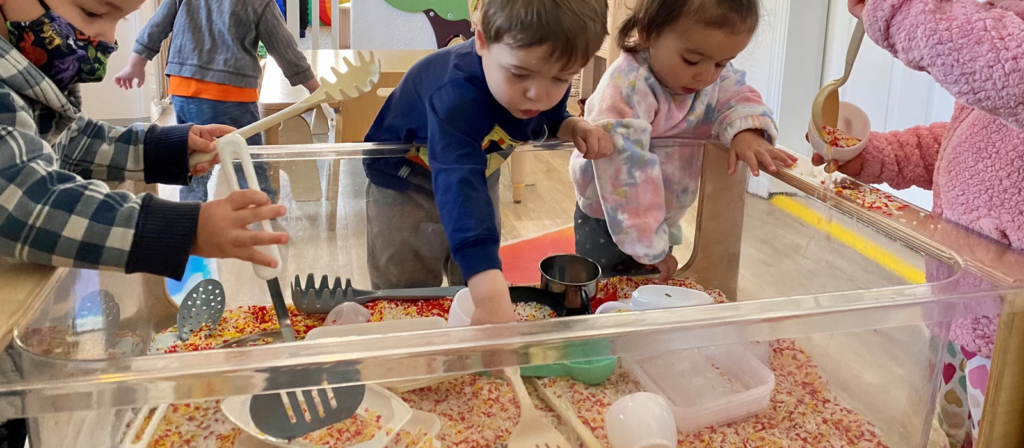
1. Nature Walk and Material Exploration
Children go on a nature walk and collect found objects such as leaves, stones, twigs, and flowers. These items are brought back to the classroom for closer examination and creative use. Children observe textures and patterns, make nature collages, or use the objects as tools in painting or printing. The experience connects them with the environment and fosters observation skills.
This activity enhances sensory awareness, builds scientific curiosity, and encourages symbolic representation. Children learn to see the world in new ways and express their interpretations through art and storytelling.
วัสดุที่ต้องใช้:
- Baskets or bags for collecting
- Magnifying glasses
- Paper and pencils
- Glue and scissors
- Cardboard or canvas for collages
2. Shadow and Light Investigation
Children explore how light behaves using flashlights, mirrors, translucent materials, and projectors. They experiment by casting shadows, reflecting light, and creating moving images. As they play with shapes and shadows, they begin to develop theories about light and movement.
This activity nurtures early scientific thinking, spatial awareness, and visual storytelling. It also invites children to express abstract ideas and emotions using nonverbal forms of communication.
วัสดุที่ต้องใช้:
- Flashlights
- กระจก
- White sheets or walls
- Transparent colored paper or cellophane
- Cut-out figures or puppets
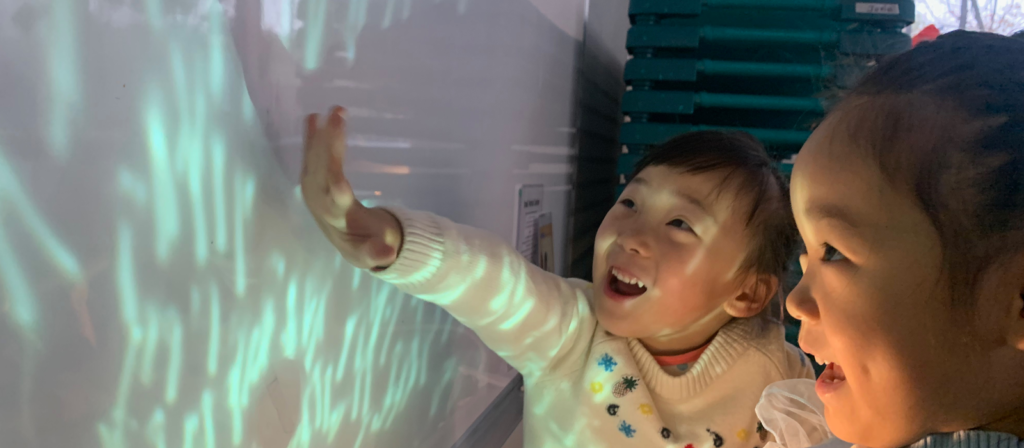
3. Collaborative Mural Painting
A large shared mural invites children to co-create a painting using brushes, hands, natural objects, or found materials. They may respond to a shared prompt or develop a spontaneous scene. Through group discussion and joint decision-making, children learn to negotiate space, ideas, and contributions.
This activity promotes cooperation, emotional expression, and creative confidence. It helps children learn how to listen to others, contribute their voice, and build a shared vision.
วัสดุที่ต้องใช้:
- Large roll of paper or canvas
- Paints and brushes
- Sponges, leaves, or textured objects
- Aprons or smocks
- Tape for mounting the mural on the wall or floor
4. Building with Recycled Materials
Children design and construct with boxes, tubes, caps, and scrap fabrics. They imagine homes, cities, or fantastical creatures, experimenting with form, balance, and connection. The process is guided by their own interests, and the outcomes often evolve over days.
This activity strengthens problem-solving, fine motor coordination, and design thinking. It also teaches sustainability and encourages children to see creative potential in everyday materials.
วัสดุที่ต้องใช้:
- Cardboard boxes and tubes
- Bottle caps and lids
- Glue, tape, and scissors
- Fabric scraps or yarn
- Paper fasteners or pipe cleaners
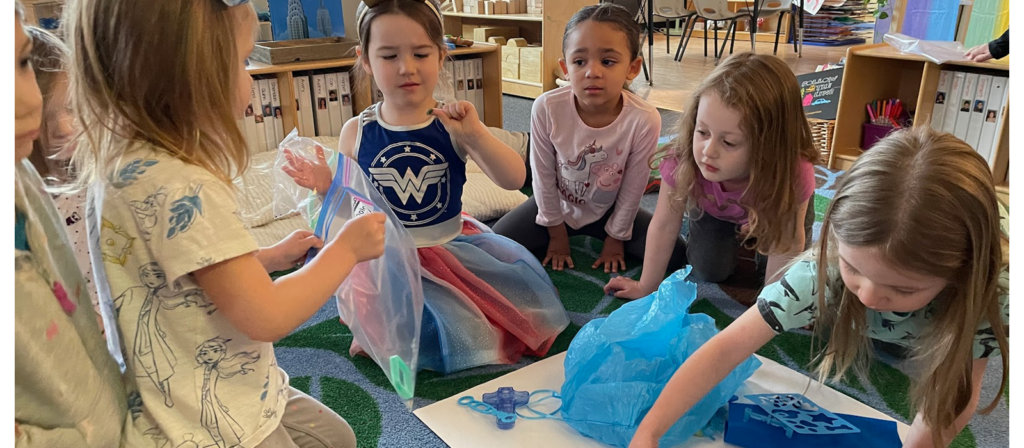
5. Story Mapping with Loose Parts
Children use small loose items to create characters and settings for original stories. They arrange materials on a mat or table and tell their story verbally, through drawing, or by recording it digitally. Each story can be revisited, altered, or expanded later.
This activity builds narrative thinking, vocabulary, and sequencing. It supports symbolic play and gives children alternative ways to express complex ideas and emotions.
วัสดุที่ต้องใช้:
- Wooden blocks or discs
- Stones and buttons
- Shells, string, and felt
- Story mats or trays
- Drawing paper or digital recorder
6. Emotional Expression through Clay
Children are invited to shape clay into symbols of their thoughts or feelings. They may sculpt “what happiness looks like” or build a clay memory of a favorite place. The tactile nature of the material allows for deep sensory and emotional engagement.
This activity supports emotional intelligence, self-awareness, and mindfulness. Working with clay also strengthens hand muscles and encourages sustained concentration.
วัสดุที่ต้องใช้:
- Natural clay or air-dry clay
- Clay tools or sticks
- Aprons or table covers
- Small containers of water
- Photographs or story prompts (optional)
ความท้าทายและการวิพากษ์วิจารณ์ของแนวทางเรจจิโอเอมีเลีย
While the Reggio Emilia Approach is widely admired for its innovation and child-centered values, it is not without limitations. Understanding these challenges is crucial for educators, school founders, and policymakers to make informed decisions about implementation and long-term sustainability.
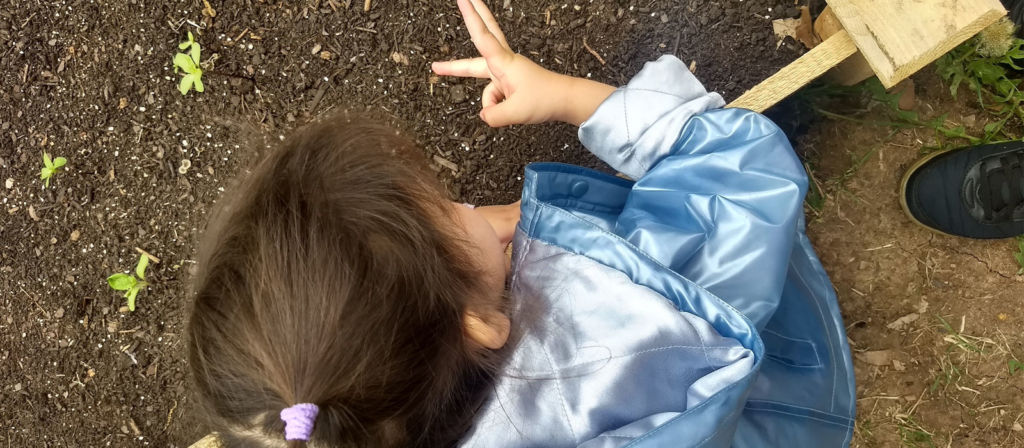
1. การขาดมาตรฐาน
One of the most frequent criticisms of the Reggio Emilia Approach is its lack of a fixed curriculum or formal assessment system. Because learning is emergent and shaped by children’s interests, there are no preset benchmarks or standardized learning outcomes.
While beneficial in many ways, this flexibility can also make it difficult to measure progress objectively. This can be a significant barrier for school administrators or government bodies looking for consistent metrics. Teachers must rely on documentation and professional judgment rather than external testing, which can raise concerns about accountability and educational quality in some contexts.
Furthermore, without a universal framework, the quality of Reggio-inspired programs can vary widely depending on individual schools’ training, resources, and interpretation.
2. ความต้องการครูที่สูง
Implementing the Reggio Emilia Approach requires educators to take on multiple complex roles as teachers, researchers, documenters, designers, and collaborators. This demands high training, observation skills, and pedagogical reflection.
ครูควรปรับสภาพแวดล้อมการเรียนรู้ให้เหมาะสมอยู่เสมอ ตอบสนองต่อแนวคิดของเด็กๆ แบบเรียลไทม์ และจัดทำเอกสารประกอบการเรียนรู้โดยละเอียด ซึ่งอาจต้องใช้เวลาและอารมณ์มาก โดยเฉพาะอย่างยิ่งสำหรับโรงเรียนที่มีเจ้าหน้าที่จำกัดหรือมีอัตราส่วนนักเรียนต่อครูสูง
Without proper support and ongoing professional development, even skilled teachers may struggle to fully realize the philosophy in daily practice.
3. สภาพแวดล้อมที่ใช้ทรัพยากรอย่างเข้มข้น
The Reggio Emilia classroom is more than a room with tables and toys. A curated environment stimulates inquiry, autonomy, and aesthetic appreciation. Schools must invest in quality materials, flexible furniture, and thoughtful design, often using natural and real-world elements like wood, metal, mirrors, and recycled items.
Recreating this environment can be financially and logistically challenging for new or budget-limited schools. Sourcing age-appropriate, open-ended materials and continuously updating them to reflect children’s evolving interests adds ongoing operational pressure.
Documentation tools (cameras, printing, display spaces) and teacher planning time must be factored into the budget and daily workflow.
4. ความไม่เหมาะสมทางวัฒนธรรมและโครงสร้าง
แม้ว่าแนวทาง Reggio Emilia จะถือกำเนิดในบริบททางวัฒนธรรมและการเมืองเฉพาะของอิตาลีซึ่งมีความร่วมมือ การระดมทุนสาธารณะ และการมีส่วนร่วมของชุมชนที่แข็งแกร่ง แต่การถ่ายโอนไปยังประเทศอื่นๆ ไม่ได้ราบรื่นเสมอไป
The approach may face resistance in systems where standardized testing, rigid curricula, or limited parent engagement are the norm. Some schools find it challenging to reconcile Reggio principles with external mandates, such as early literacy benchmarks or government inspections.
การปรับตัวให้ประสบความสำเร็จมักต้องอาศัยการเปลี่ยนแปลงเชิงระบบ ไม่ใช่เพียงการปรับเปลี่ยนระดับผิวเผิน หากขาดการเปลี่ยนแปลงเหล่านี้ ปรัชญาอาจถูกเจือจางหรือนำไปใช้อย่างไม่ถูกต้อง
The Reggio Emilia Approach is robust but also demanding. It requires deep commitment, flexible thinking, and long-term professional development and classroom infrastructure investment.
Understanding these challenges is not a reason to reject the approach; it’s a reason to prepare well. With the right mindset and resources, many of these obstacles can be transformed into opportunities for growth.
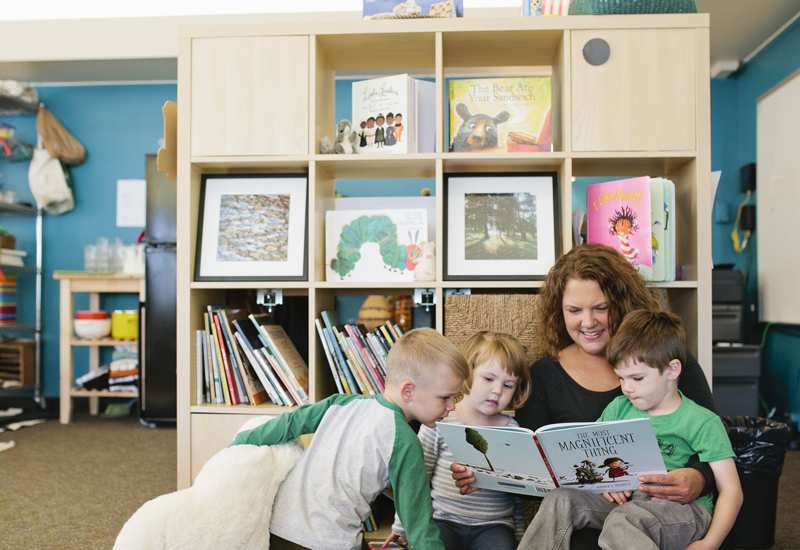

พร้อมที่จะออกแบบพื้นที่ที่สร้างแรงบันดาลใจในการเรียนรู้หรือยัง ติดต่อเราเพื่อสร้างโซลูชันเฟอร์นิเจอร์ที่ปรับแต่งให้เหมาะกับความต้องการในห้องเรียนของคุณ
บทสรุป
The Reggio Emilia Approach reshapes early childhood education by placing children at the center of their learning. Through open-ended inquiry, expressive languages, and collaboration, it empowers young learners to construct meaning rather than passively absorb content. This framework doesn’t just teach, it helps children think, feel, and imagine in ways that last a lifetime.
Implementing this approach requires more than philosophy; it demands environments that mirror its values — flexible, beautiful, and built for exploration. That’s why thoughtfully designed furniture and adaptable classroom zones matter. Manufacturers like เวสท์ชอร์เฟอร์นิเจอร์, which specialize in early childhood furniture solutions, quietly support this vision by crafting environments that align with Reggio principles, giving ideas physical form without compromising safety, simplicity, or child-led accessibility.
The actual impact of the Reggio Emilia Approach is not in how well we recite its principles, but in how we translate them into living spaces, relationships, and daily practice. The transformation starts now for those ready to listen, observe, and build with intention.
FAQ: Reggio Emilia Approach
Q1: How is the Reggio Emilia program different from most other preschool programs?
ก: The Reggio Emilia Approach differs from other programs by emphasizing emergent, child-led curriculum, where learning arises from children’s interests rather than pre-set themes. For example:
- Unlike มอนเตสซอรี, which uses sequenced materials and structured tasks, Reggio promotes open-ended projects with no fixed outcomes.
- Unlike HighScope, which uses a “plan-do-review” structure and emphasizes routine, Reggio classrooms are more flexible and responsive.
- Compared to Te Whāriki from New Zealand, which also values cultural context and holistic learning, Reggio places a stronger emphasis on aesthetic environment and visual documentation as part of the learning process.
To explore how Reggio compares with other major models, visit our comprehensive Preschool Curriculum overview.
Q2: What is Reggio Emilia’s famous quote?
ก: The most well-known quote from Reggio Emilia’s founder, Loris Malaguzzi, is:
“The child has a hundred languages.”
It refers to the countless ways children express themselves through art, movement, storytelling, and more.
Q3: Is Reggio Emilia evidence-based?
ก: Yes, while not a standardized model, the Reggio Emilia Approach is supported by decades of global practice, child development theory, and educational research emphasizing creativity, autonomy, and social learning.
Q4: Are Reggio Emilia schools expensive?
ก: Reggio Emilia schools can be more expensive than traditional preschools due to the low teacher-child ratios, high-quality materials, and thoughtfully designed environments. However, costs vary by region and institution.
Q5: What does a typical day look like in a Reggio Emilia preschool?
ก: A typical day in a Reggio Emilia-inspired preschool is guided by children’s interests rather than a rigid schedule. The day often begins with a morning gathering in the “piazza” (central space), followed by time for project work, where children explore topics using materials like clay, paint, blocks, or found objects.
Teachers observe and document while children collaborate in small groups, often moving between zones like the atelier (art studio), reading corners, or outdoor gardens. There are opportunities for snack time, free play, and reflection, but transitions are gentle and responsive to the children’s flow of engagement.
Every activity is seen as a chance to express, discover, and co-construct knowledge — no worksheets, rigid lesson plans, just real learning in action.

